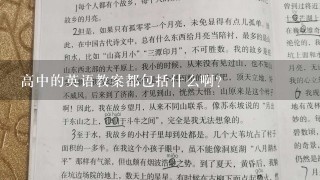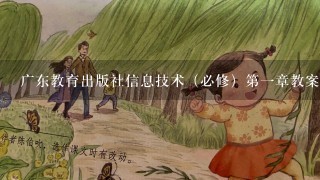人教版高中历史必修三第三、四单元复习提纲,求高一英语 必修一 第三单元的单词!

1、人教版高中历史必修三第三、四单元复习提纲
因为字数的限制我没法全放上了,如果你觉得这份资料是你要的,请联系我(用百度Hi或者站内短信都行) ================================================================= 历史必修三知识整理 第一单元 中国传统文化主流思想的演变 第1课 “百家争鸣”和儒家思想的形成 一 、“百家争鸣”局面出现的原因及评价
1、原因: (1)春秋战国时期,中国社会发生重大变革。社会地位较低的士,受到各诸侯国统治者的重用。他们代表本阶层或政治派别的利益和要求,提出自己的主张。 (2)政治和经济大变动,导致教育和学术领域也发生变化。社会上形成一些以传播文化、发展学术为宗旨的学者和思想流派。这些学者和思想流派,被称为“诸子百家”。 (3)学派之间的互相诘难、批驳,形成了“百家争鸣”的局面;同时,各家彼此吸收、融合,逐步形成了中国的传统文化体系。
2、评价: “百家争鸣”是中国历史上第一次思想解放运动,是中国学术文化、思想道德发展史上的重要阶段,奠定了中国思想文化发展的基础。成为中国传统文化的源头。 二、孔子和早期儒学
1、孔子生平:孔子姓孔名丘字仲尼,春秋晚期鲁国人,是著名的思想家、教育家和政治理论家,儒家学派的创始人,后人尊称“至圣”。
2、早期儒学: (1)孔子创立儒家学派。孔子的思想核心是“仁”。他认为仁就是爱人,人与人之间要互相爱护,融洽相处;要做到待人宽容,“已所不欲,勿施于人”。孔子强调统治者要以德治民,爱惜民力,取信于民,反对苛政和任意刑杀。孔子首创私人讲学,主张“有教无类”,打破了贵族垄断文化教育的局面。 (2)孟子和荀子是儒家学派的两位重要代表人物。孟子发展了孔子“仁”的思想,主张实行“仁政”,进一步提出“民为贵,社稷次之,君为轻”的民本思想。在伦理观上,孟子主张“性本善”。 荀子也主张统治者施政用“仁义”和“王道”,以德服人,并提出“君者舟也,庶人者水也。水则载舟,水则覆舟”的著名论断。 (3)孟子、荀子对儒家思想加以总结和改造,又吸收了一些其他学派的积极合理成分,使儒学体系更加完整,儒家思想更能适应社会的需要。 三、道家和法家
1、道家: (1)老子,道家学派的创始人。老子认为世界万物的本原是“道”。他强调一切要顺应自然,提倡清静无为、知足寡欲。他指出社会动荡的根源,在于人们的行为违背了自然,提出“无为而治”的政治主张。 (2)庄子,继承和发展了老子的学说。
2、法家: 法家学派的集大成者是战国末期的韩非子。主张君主要以法治国,利用权术驾驭大臣,以绝对的权威来震慑臣民,提出了系统的法治理论。法家把君主的权力提高到极点,迎合了建立大一统专制国家的历史发展趋势。 第2课 “罢黜百家,独尊儒术" 一、 从“无为”到“有为” (1)原因:秦末战火频繁,社会经济破坏严重。 (2)目的:为了恢复生产和安定人心,统治者吸取道家“无为而治”的思想,采取与民休息的政策。 (3)措施:减轻田租、赦免自卖为奴婢者为庶人、让大量士兵回家,授予田宅,并免除一定的赋税和徭役等。 (4)结果:经过六十多年的休养生息,汉朝的经济实力逐渐恢复和增强,人民生活安定,社会繁荣,国力日盛。 (5)汉初面临的社会问题: 内:诸侯国的势力日益膨胀,土地兼并严重,割据局面正在形成。 外:匈奴为患,边关危机,威胁着西汉的稳定。 (6)为了加强中央集权,适应国家统一形势的发展需要,积极有为的政治思想成为时代的需要。 二、“罢黜百家,独尊儒术”
1、董仲舒其人: 汉代儒家的代表人物。他把诸子百家中道家、法家和阴阳五行家的一些思想糅合到儒家思想中,形成了新的儒学体系。汉武帝在位期间,董仲舒曾三次参加对策,阐发他的儒学思想。
2、董仲舒的思想主张: (1)为适应汉武帝加强中央集权的需要,提出“春秋大一统”和“罢黜百家,独尊儒术”的主张。提出不在儒家六经范围之内的各家学术都应罢黜。 (2)为了加强君权,董仲舒宣扬“君权神授”。他提出了“天人合一”和“天人感应”学说。 (3) 董仲舒还提出了“君为臣纲”“父为子纲”“夫为妻纲”和仁、义、礼、智、信五种为人处世的道德标准,后人归纳为“三纲五常”。 三、儒学成为正。

2、求高一英语 必修一 第三单元的单词!
Unit 3 journal n. 日记;杂志;定期刊物 transport n. 运送;运输 vt. 运输;运送 prefer vt. 更喜欢;选择某事物(而不选择其他事物) disadvantage n. 不利条件;不便之处 fare n. 费用 △route n. 路线;路途 △Mekong n. 湄公河 flow vi. 流动;流出 n. 流动;流量 ever since 从那以后 persuade vt. 说服;劝说 cycle vi. 骑自行车 graduate vi. 毕业 n. 大学毕业生 finally adv. 最后;终于 schedule n. 时间表;进度表 vt. 为某事安排时间 fond adj. 喜爱的;慈爱的;宠爱的 be fond of 喜爱;喜欢 shortcoming n. 缺点 stubborn adj. 顽固的;固执的 organize vt. 组织;成立 care about 关心;忧虑;惦念 △detail n. 细节;详情 △source n. 来源;水源 determine vt. 决定;确定;下定决心 determined adj. 坚决的;有决心的 change one’s mind 改变主意 journey n. 旅行;旅程 altitude n. 海拔高度;高处 make up one’s mind 下决心;决定 give in 投降;屈服;让步 △atlas n. 地图;地图集 △glacier n. 冰河;冰川 △Tibetan adj. 西藏的;藏族的; 藏族人的 n. (西)藏语;西藏人; 藏族人 △rapids n. 急流 valley n. (山)谷;流域 △waterfall n. 瀑布 pace vi. 缓慢而行;踱步 n. 一步;速度;步调 bend n. 弯;拐角 vt. (bent, bent) 使弯曲 vi. 弯身;弯腰 △meander n. (指河流等)蜿蜒缓慢流动 △delta n. 三角洲 attitude n. 态度;看法 △Qomolangma n. 珠穆朗玛峰 boil vi. (指液体)沸腾;(水)开 forecast n. & vt. 预测;预报 parcel n. 小包;包裹 insurance n. 保险 wool n. 羊毛;毛织品 as usual 照常 reliable adj. 可信赖的;可靠的 view n. 风景;视野;观点;见解 vt. 观看;注视;考虑 △yak n. 牦牛 pillow n. 枕头;枕垫 midnight n. 午夜;子夜 at midnight 在午夜 flame n. 火焰;光芒;热情 beneath prep. 在……下面 △Laos n. 老挝(东南亚国家) △Laotian n. 老挝人 adj. 老挝(人)的 temple n. 庙宇;寺庙 cave n. 洞穴;地窖。

3、高中英语人教版必修四第四单元Reading的相关语法
Book 4 Module 4
1、 bring up
2、 as a result of…
3、 be known for
4、 earn/make one’s/a living
5、 come to power
6、 make a breakthrough=break through
7、 a quantity of…+单数谓语, quantities of…+复数谓语
8、 a physical change,
9、 physical labour, physical disability
10、 escape punishment=escape being punished
11、 escape from
12、 the key to (doing) sth
13、 rise/increase by…
14、 rise/increase to…
15、 do…by accident
16、 throw… into…
17、 jump out of…
18、 a leading figure
19、 as a child 20. from an early age 2
1、 experiment with… 2
2、 export…to… 2
3、 send astronauts into space 2
4、 be at war with… 2
5、 shoot arrows 2
6、 attach…to…,be attached to…, 2
7、 in…direction 2
8、 introduce… to… 2
9、 keep…doing 30. be used for… 3
1、 graduate from… 3
2、 in the area/field of 3
3、 award…Noble Prize for physics 3
4、 in/during the 1990s/1990’s 3
5、 In the rice-growing world, the Chinese scientist, Yuan Longping, is a leading figure. 3
6、 He thought that the key to feeding people was to have more rice and to produce it more quickly. 3
7、 He thought there was only one way to do this—by crossing different species of rice plant. 3
8、 Researchers were brought in from all over China to develop the new system. 3
9、 As a result of Yuan Longping’s discoveries Chinese rice production rose by 4
7、5 percent in the 1990s. 40. 50 thousand square kilometers of rice fields were converted to growing vegetables and other cash crops. 4
1、 In Pakistan rice is the second most important crop after wheat and will be grown in many parts of the country. 4
2、 Today rockets are very advanced machines which we can use to send astronauts into space. 4
3、 The Chinese had a form of gunpowder which was put in bamboo tubes and thrown into fires to make explosions during festivals. 4
4、 The Chinese discovered that the gas escaping from the tube could lift it into the air. 4
5、 The tubes were attached to a long stick which help keep the rocket moving in a straight direction. 4
6、 One Italian scientist even invented a rocket which could travel over the surface of water and hit an enemy ship. 4
7、 Not everyone wanted to use rockets in battles. 4
8、 Did Wan Hu die in the explosion? Or was he carried miles into space, becoming the world’s first astronaut? Book 4 Module 4
1、 抚养养育,呕吐提出问题,抬高
2、 由于的结果
3、 因为而著名
4、 谋生
5、 掌权
6、 突破
7、 大量的
8、 一个物理变化
9、 体力劳动,身体残疾
10、 逃脱惩罚
11、 从中逃脱
12、 做的关键
13、 增加了
14、 增加到
15、 偶然做某事
16、 把仍入
17、 从中跳出
18、 一个领衔人物
19、 当他是一个孩子时 20. 养育 2
1、 从很小时起 2
2、 用……做实验 2
3、 出口……到…… 2
4、 把飞行员送入太空 2
5、 与….处于交战状态 2
6、 射箭 2
7、 系…到…上,被系到…上, 2
8、 朝…方向 2
9、 把…引入,引进到… 30. 被用做… 3
1、 从毕业 3
2、 在领域 3
3、 授予诺贝尔物理奖 3
4、 在20世纪90年代 3
5、 在水稻种植界, 中国科学家袁隆平堪称为是一个领军人物 / 杰出人物。 3
6、 他认为, 解决人们吃饭问题的关键在于拥有更多的稻米, 并且能更快地生产出来。 3
7、 他认为只有一种方法可以做到这一点—对不同种类的水稻进行杂交。 3
8、 全国各地的研究人员被召集到一起, 共同研究这项新体系。 3
9、 由于袁隆平的发现,中国的水稻产量在20世纪90年代增长了4
7、5%。 40. 五万平方千米的稻田转而种起了蔬菜及其它经济作物。 4
1、 在巴基斯坦, 水稻是继小麦之后的第二大作物, 而且将在这个国家的许多地区种植。 4
2、 当今, 火箭是非常先进的器械, 我们可以用来向太空派送宇航员。 4
3、 中国人发明了一种火药, 它可以在节日期间被装进竹筒扔进火里发出(噼里啪啦的)爆炸声。 4
4、 中国人发现, 从竹筒里跑出来的空气可以把它推向空中。 4
5、 竹筒被系在一根长棍子上, 它利于保持火箭直向飞行。 4
6、 一位意大利科学家甚至发明了一种能够在水面上飞行并击中敌舰的火箭。 4
7、 但是并非每个人都想在战争中运用火箭。 4
8、 万胡在爆炸中死掉了? 还是被带往空中几英里的地方, 成为世界上第一位宇航员?。

4、求外研版高中英语必修1 module3 my first ride on the train 的introduction的详细英语教案,课件,说课稿
供参考的范例 Module 1 Unit 2 Heroes Lesson 1 Modern Heroes 说课教案 (一) 教学内容
1、 本课是Unit 2 heroes Lesson 1 Modern Heroes 的第一课时。本单元分别介绍了National hero, History makers,Sports stars 和 Superhero。这几篇文章的主题都是hero,但涉及的领域不同,它们融会贯通,承上启下,融为一体。
2、 本课是介绍National Hero,是学生比较熟悉和感兴趣的话题,前部分需要介绍杨利伟和神州五号,让学生掌握有关词汇;后一部分是介绍杨利伟乘坐神州五号宇宙飞船遨游太空的情况。
3、 本课文出现了较多的定语从句,还有生词较多(有些单词表没有而初中又没有学过),在这样的困难前提下,我引导学生通过 culture and background knowledge,结合课本内容丰富自己的知识面,拓宽学生对航天知识的了解,让学生了解航天英雄的成功之路,激发他们的民族自豪感。 (二) 学生分析
1、 组成情况 职业高中高一学生年龄都在14-16岁之间,大多数学生由于初中的知识基础打得不扎实,而且缺乏主动学习的能动性,自学能力差,对学习没有持有探究性和方向性,也没有养成良好英语学习习惯,所以学习成绩不太理想。
2、 学生的知识与技能水平 职业高中招生的学生,基础知识比较薄弱,甚至连音标都不会读,词汇的掌握范围狭窄,影响了阅读,听力和作文。学生的表达能力还是停留在比较低级的水平,面对每幅图片或某个主题只能说出一两句话,而且在阅读上,未能掌握泛读和精读的技巧和方法,课后的预习和复习能力较差,缺乏总结归纳的能力。
3、 学生已掌握的学习策略 尽管学生的知识和技能水平一般,但经过了一定时间的训练后,他们还是掌握了pair work, group work, using the culture and background knowledge的阅读技巧。 (三) 教学目标
1、 通过快速阅读文章,学生能够对每段文章进行归纳总结,准确地把段落主题与所给的headings联系起来。
2、 通过仔细阅读,学生能够回答关于文章的细节问题。
3、 通过进一步阅读,学生能够学生能用英语对采访自己心目中的民族英雄。并尝试复述课文。 (四) 教学策略 教学方法:使用交际法,充分调动学生的积极性,积极参与到课堂教学中,通过师生互动,小组表演的形式,完成各种任务,以达到完成教学任务的途径。 (五) 教学过程 第一步 导入 T: Good morning, Everyone! Do you like watching movies? Do you know Jet Lee (李连杰)?Do you know one of his famous movie called HERO? What does ‘hero’ mean? Who are the heroes in your heart? Do you know Yan Liwei, our national hero? 第二步 介绍文章人物 T: Open your books, and turn to page 100 and 10
1、 Let’s read two passages about Shenzhou V and Yang Liwei. Shenzhou V is China’s first manned spaceship. It lifted off at 9 a.m. on Wednesday, October 15th, 2003 in Jiuquan, Gansu Province. It was carrying Yang Liwei. It was launched very successfully and landed in Inner Mongolia safely. Yang Liwei is China’s first astronaut. He was a pilot in the army. He was chosen from 1,500 other army pilots and started training for his space flight in 199
8、 During the 21-hour space flight, he circled the earth 14 times. When the spaceship was doing its seventh circle, Yang Liwei showed the flags of China and the United Nations, expressing the wishes of the Chinese people to explore and use space peacefully. 介绍文章时,展示文章中的生词,让学生猜测词意,带读并加以巩固。 第三步 阅读文章 (1) Fast Reading 呈现六个headings,让学生快速阅读,要求归纳每段的主题。 a. Astronaut lands safely b. Welcome home c. International good wished d. An exciting lift-off e. Introdution f. During the flight 学生单个回答并集体讨论改正错误。 (2) Careful Reading 学生通过fast reading,完成了headings后,基本对课文有一定的了解,然后呈现出五道问题,要求学生再进行第二次阅读,对课文进行更深入的了解。
1、 How did Yang Liwei feel duing the flight? How did he feel afterwards?
2、 What did Yang Liwei do during the Shenzhou V’s seventh circle of the earth?
3、 How many circles did the spaceship complete while Yang Liwei was sleeping?
4、 What were helicopters doing as Yang Liwei returned to the earth’s atmosphere?
5、 What did Yang Liwei do when he came out of the spaceship? 第四步 巩固练习 通过两次阅读让学生对课文熟悉,训练学生的阅读速度和解题技巧,最后通过ask and answer in pairs,培养学生的口语能力,并强迫他们记住文章的主要内容,为下一步语言运用打下基础。 第五步 语言运用 为提高学生对生活中的热点问题发表自己观点的能力,让学生运用自己学过的语言知识,对自己心目中的民族英雄进行模拟采访。把全班同学分成若干个小组,每个小组有一名同学扮演“杨利伟”,其他同学为全国各地新闻媒体记者,他们自由设计问题,对“杨利伟”进行采访。 教师巡视课堂,发现表现出色的小组,让他们到台前表演。 教师总结评价。 第六步 布置作业 让学生准备复述杨利伟的故事,要求说出自己的民族自豪感。 A Teaching Plan for Unit 3 Celebration Lesson 1 Festivals HUANG SHUI PING General objectives:
1、To read to learn the main Chinese seasonal festivals and their history origin and meanings.
2、To help them learn some phrasal verbs and functional items about the topic and try to use them. Language aim:
1、Phrases: Be celebrated by, fall on , mark, be decorated with, tradition/traditional, serve, take part in, get together
2、important sentences: The Mid-Autumn Festival is celebrated by Chinese people. The Lantern Festival falls on the fifteenth day of the first lunar month. It marks the beginning of the hottest season of the year. Ability aim: 1).Improving the ability of getting the general information and specific information from reading a text. 2). Using own words to describe some important Chinese festivals. Emotion aim: To promote students’ qualities of a patriotism(爱国主义精神,爱国心) by learning the main Chinese festivals and learn their history origin and their meanings。 Teaching important points and difficult points: 1).To get information from reading 2).To talk about festivals freely in English. Teaching methods: Brainstorming, task-based teaching method , heuristic teaching method , group work. Teaching aids: a recorder, a computer, and blackboard Teaching procedures: Step
1、 Greeting and reviewing. Greet the class as usual. Ask: what we can celebrate in our life? Get students to answer using the key words in warming up. eg, Graduation, a birthday, Christmas, passing an exam, winning a scholarship, a sporting victory, the Mid-Autumn Festival, the New Year, a wedding, Halloween, the Dragon Boat Festival Step
2、 Leading-in. Show students many pictures of different seasons on the screen , asking: What’s your favourite season? Why? Help students answer using the words that they have already learned. Then ask: What festivals happen during your favourite seasons? Show more pictures about different festivals on the screen to help them to answer. Students can work together to answer this question. Eg, T:What is your favorite season? What festivals happen during your favorite season? ( have a discussion) (S1: I liker summer. There are Children’s Day, Dragon-boat Festival and Mother’s Day. S2: My favorite season is winter. They are Spring Festival and Lantern Festival and Christmas Day. S3: …… T:Well done. Thank you. Explain the differences between Day and Festival. Step
3、While-reading Activity
1、Fast-reading Get students to read the text quickly, match the pictures with the festivals. Activity
2、 Guessing. Show some describing sentences on the screen to let students read and guess the names of the three festivals . Activity
3、 Careful-reading This time let students read the text carefully and get more detailed information to fill in the table of exercise3 on page3
6、 Ask some students to report their answers to the class. Step
4、 Practice Play the tape for the students to listen and ask them to fill in the blanks according the text.
1、The Mid-Autumn Festival happens in September or______. it is important because it is a special _____ for family.
2、 There are many different kinds of mooncakes ____ fruit, coffee, chocolate and so on.
3、 The ____ ____ Festival falls on the fifth day of the fifth month of the lunar year.
4、The Dragon boat race marks the _____ of the hottest season of the year.
5、________Festival marks the end of the Chinese New Year celebration. Step
5、 Post-reading. Let students discuss with a partner and answer the following question. Which festival in China is most important for children? Young people? Old people? Women and men? Then ask some students to give a report. Step
6、 Homework.
1、 do the exercise 9 on Page 37
2、 remember the new words in Lesson One.
3、 use your own words to describe a festival that you are familiar with. Step
7、 Blackboard design. Lesson 1 Festivals The Mid-Autumn Festival is celebrated by Chinese people. The Lantern Festival falls on the fifteenth day of the first lunar month. It marks the beginning of the hottest season of the year.。

5、高中的英语教案都包括什么啊?
。

6、广东教育出版社信息技术(必修)第一章教案
。





































































